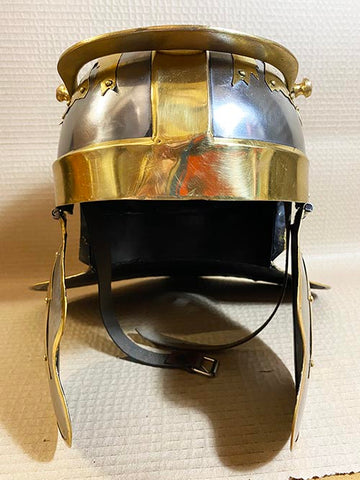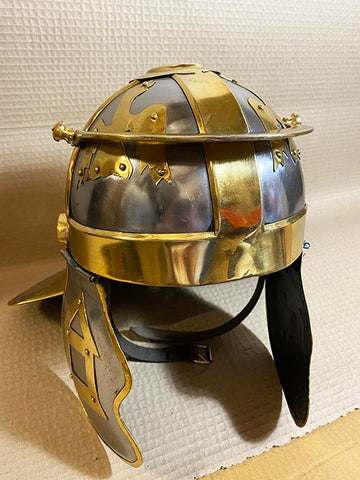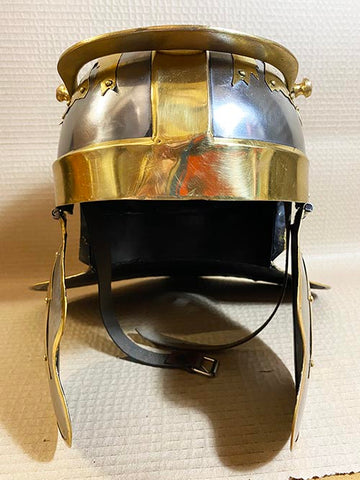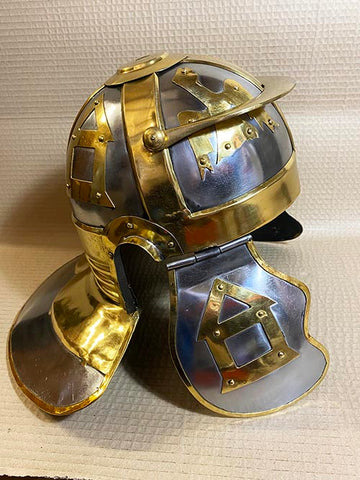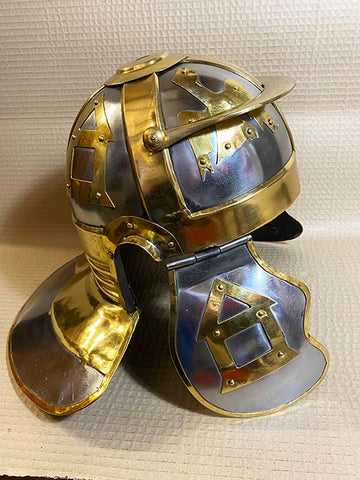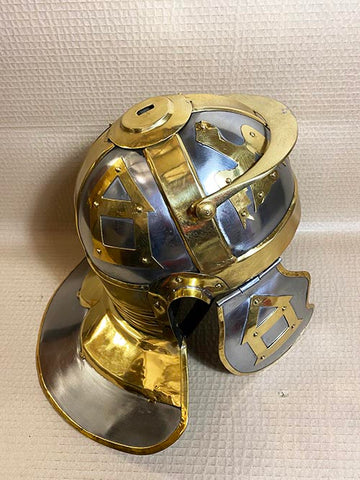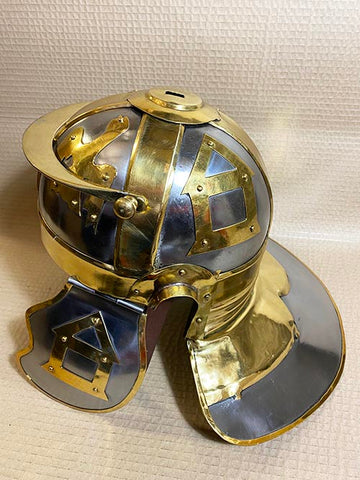ROMAN ITALIC HELMET
Shares :
Ref: SC-6029
Roman Imperial Italic D Helmet
This Roman Imperial Italic D Helmet is patterned after an original from the Rhine at Mainz, one the best-preserved Roman helmets to have survived. Robinson dated this helmet to the second half of the 1st century AD, but some experts believe that his dating is far too early. The congruence of this style with later helmets of the Italic series, such as the Italic G and H (Niedermörmter), suggests that it is at least from the early 2nd century AD. Others, including Dan Peterson, continue to support Robinson's earlier dating, so it may safely be used by re-enactors portraying either the first or second centuries AD. This helmet incorporates a steel cranium with much brass furniture, such as decorative cross-bracing and symbols such as eagles, temples and altars on the cheek guards and the cranium. This high level of decoration has led some to speculate that the type was employed by members of an elite unit such as the Praetorian Guard. But the discovery of a similar highly decorated, but somewhat different helmet at Krefeld (Germany) indicates elaborately decorated helmets were perhaps more common than previously thought. Deepeeka's version of the Mainz helmet has been newly revised to a truly exceptional level of accuracy with the help of the discussion group, Roman Army Talk (RAT). The steel and brass Roman Imperial Italic D Helmet is made from 18 gauge steel with brass accents. Includes cheek flaps, padded cap and is painted black inside to help prevent rusting. From Mainz. First or second centuries AD.
Dimensions: 20x22x23 cm


